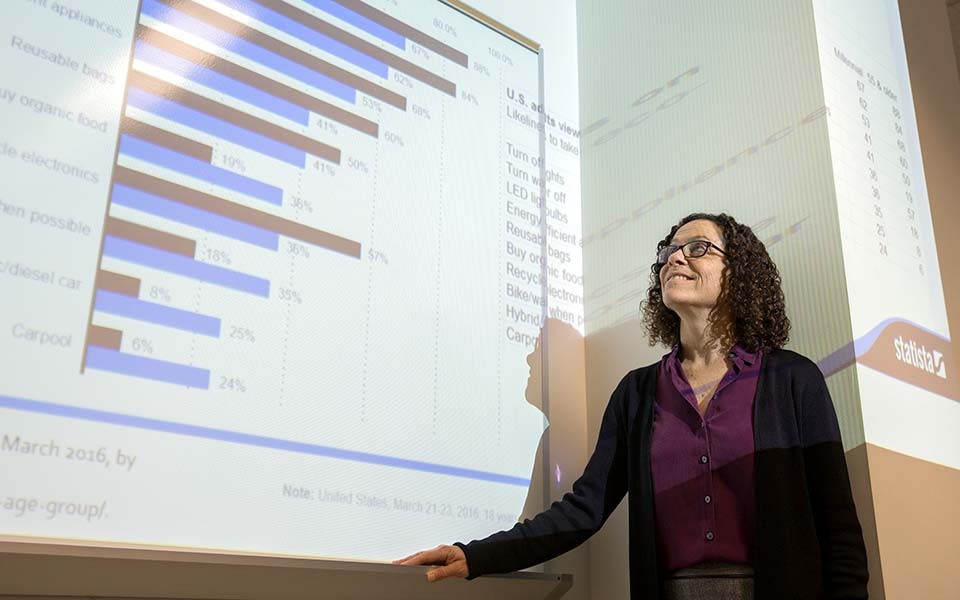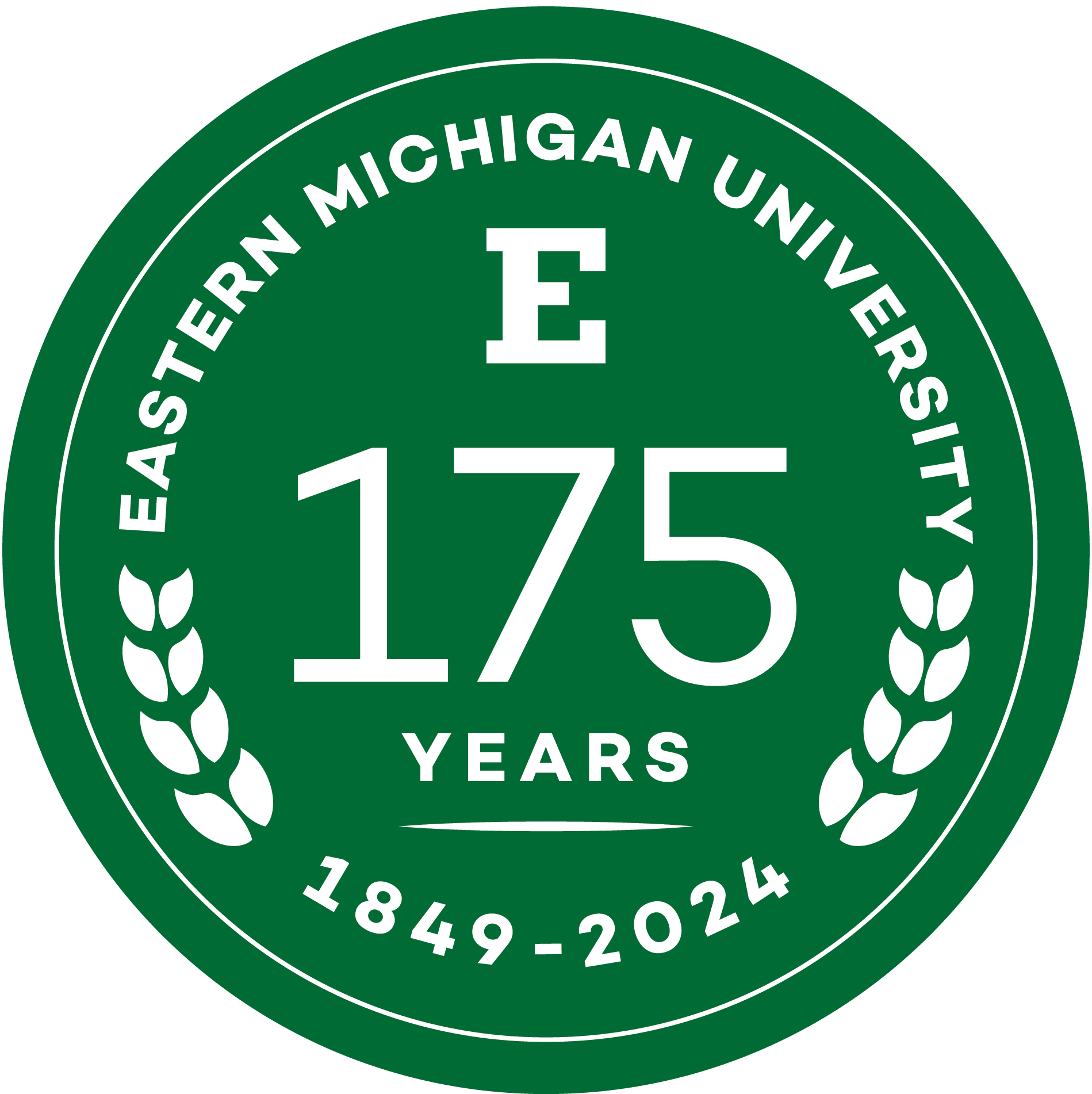EMU librarian helps students understand, embrace data

A few simple keystrokes can open a world of data to students via the internet. Of course, not all data is created equal. But can students make those distinctions?
“Faculty often tell me students aren’t vetting the charts inserted in their presentations, or students aren’t able to distinguish between good and bad sources,” says Meryl Brodsky, business librarian at EMU’s Halle Library. “Students are often swayed by non-substantiated data. We want them to understand how to evaluate data and cite it properly.”
Brodsky’s research interests center on data literacy: the ability to read charts and graphs, interpret statistical information and draw conclusions about that data—including knowing when data is misleading.
The problem of data literacy isn’t just confined to the classroom. With nearly 20 years of experience working for companies like Ernst & Young and Hewlett-Packard, Brodsky has seen data-interpretation issues creep into the corporate world.
“Companies can make poor decisions based on bad data,” Brodsky says. “That can negatively impact sales forecasts, for example. I want to arm students with the skills to find good, objective data to present to their employers.”
To that end, Brodsky completed a syllabus study last fall identifying opportunities to teach data literacy within EMU’s College of Business. She recently published her findings in the International Journal of Librarianship. Now she’s reaching out to business and economics faculty members, offering data literacy instruction in their classes.
“Librarians typically introduce students in lower level undergraduate classes to scholarly research and how to review literature,” Brodsky says. “I’d like to extend those sessions to include data literacy. It’s helpful for students to get that experience early in their academic careers. Then they can continually refine their skills and use them effectively in the business world after graduating.”
This fall, Brodsky taught a joint session about data literacy with Assistant Professor of Marketing Anthony Koschmann in his Marketing Research class (MKT 470).
“I offered instruction on how to read a chart and how to improve presentations with charts,” Brodsky says. “We don’t have a dedicated data librarian at EMU, so our data literacy instruction program is in its infancy. I’d also like to work with our health sciences and STEM librarians to create data literacy classes in other academic areas.”
Brodsky also created “How to Read a Chart,” a self-paced tutorial posted on the EMU Library website. Additional tutorials to be posted by the end of the 2018 academic year will include “What is Data/Data Literacy,” “Measures of Average,” and “File Naming.”
“I’ve attended the 2017 Midwest Data Librarian Symposium and am involved in IASSIST [the International Association for Social Science Information Services and Technology],” Brodsky says. “Researchers have been working with statistics for a very long time. But with the explosion of data on the internet, data literacy is more important than ever.”
It’s difficult to measure the level of data literacy among students. But Brodsky’s early efforts are paying off. In MKT 470, half the students said they felt “more comfortable” working with data after attending the data literacy session.
“Some students have a fear of numeric data, but there’s really no need for that,” she says. “EMU librarians can help with their data literacy needs. We’re also available to consult with faculty and design a data literacy session for their class.”
For more information about data literacy or data literacy instruction, contact Meryl Brodsky at mbrodsky@emich.edu.
October 20, 2017
Written by:
Jeff Samoray
Media Contact:
Darcy Gifford
dgiffor2@emich.edu
734.487.5375
More Stories

Eastern Michigan University awards Summer Research and Creative Activity Grants.

Eastern Michigan University to launch new Bachelor of Business Administration in Financial Planning and Wealth Management degree.

Eastern Michigan University empowers student-faculty collaboration with Undergraduate Symposium Research Fellow Awards.

Eastern Michigan University senior Raya Lasiewski inspires hope and healing through personal journey with eating disorder.

Veteran exceeds limits to becoming an Eastern Michigan University graduate.

